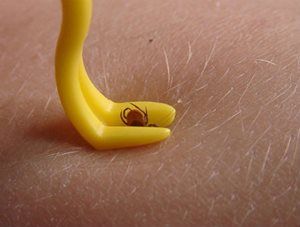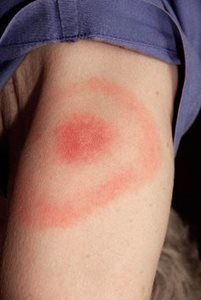Blog modified on April 11, 2022.
When the vet told me that my cat had ticks that could be harmful to me, I felt a sudden tingle run down my spine. Luckily, the little black dots in my bed hadn’t yet eaten me alive or given me Lyme disease.
The disease has been on the rise in Canada for several years and can cause fever, fatigue, headaches and muscle pain, or even cause more serious joint, heart or neurological problems.
First aid training provides additional information on how to treat tick and other insect bites. You can also download our free first aid app for advice and tips.
Prevention
In a forested or grassy area:
- Wear a long-sleeved shirt and long pants.
- Tuck your pant legs into your socks.
- Wear light-coloured clothing.
- Avoid wearing perfume.
- Walk in the middle of paths.
- Stay away from bushes and tall grass.
- At the end of your day out, carefully check yourself for insects and ticks.
- Spray your outdoor pets with insect repellent and check them for insects and ticks.
 Treatment
Treatment
If someone has been bitten by a tick:
- If the tick hasn’t started to dig into the flesh, remove it by brushing it off the skin.
- If the tick has started to dig into the flesh, grasp its head with tweezers and pull it out.
- When the tick is out, wash the area with water. Then apply an antiseptic or antibiotic ointment to prevent infection.
- If you cannot remove the tick or if its mouthparts stay in the skin, seek medical attention. Ticks have barbed mouthparts for latching onto their hosts.
- If a rash or flu-like symptoms appear within a month of the bite, seek medical attention.
Symptoms of Lyme disease 
- A rash in a small red area that spreads up to 13–18 cm (5–7 in) across.
- Fever, headache, weakness, and joint pain that may feel like the flu.
Other symptoms can appear weeks or months after the bite:
- Arthritis, numbness or a stiff neck
- Memory loss
- An irregular or rapid heartbeat
- Problems seeing or hearing
- A high fever
If you experience these symptoms, seek medical attention as soon as possible.
To learn more about ticks and Lyme disease, visit the Government of Canada portal.
(Photo credit: James Gathany Content Provider(s): CDC/James Gathany)